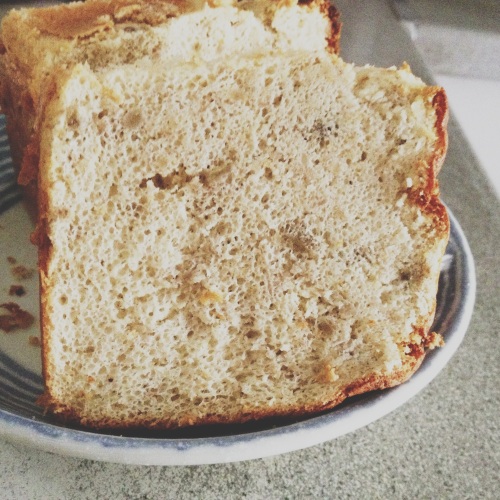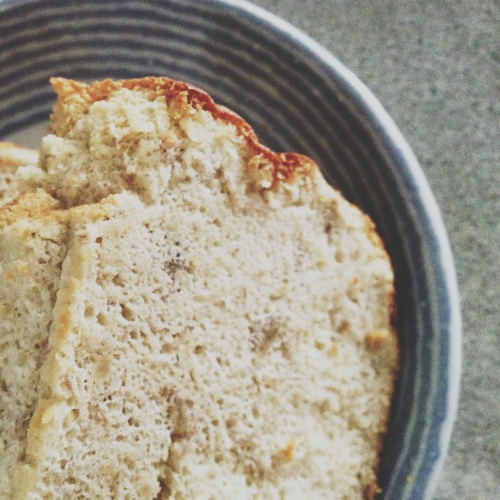Banana Chiffon Cake
Chiffon cakes are foolproof cakes. At least they are for me. I can simply whip them up and they always turn out perfectly. You can make chiffon cakes work for you too, if you know how to beat your egg whites right. I used to have problems with beating egg whites till stiff peaks, that is I would over-beat them till they dry out, or that they don’t reach the stiff peak stage at all. That’s a bummer, but with a lot of practice (and many failed recipes and deflated cakes later), I have finally mastered how to whip my egg whites right.
I love bananas. So much that I had to have them everyday. You would probably have notice that by now, since my blog header is of a bunch of bananas (hah!). In my family, we rarely have any leftover bananas – they will be all gone within a day or two if we bought any from the fruit stall. What we would do is to buy extra bunches of ripe bananas just for baking and leave them to ripe further on the kitchen table. Bananas go well with anything, and they are especially tasty in cakes. No one in the right mind could resist a good banana cake. Oh, and the aroma of freshly baked banana cake wafting from the oven… YUM!
A chiffon cake made with overripe bananas is even better than your regular banana bread. Banana breads are dense, moist and a bit too heavy to digest. On the other hand, chiffon cakes are soft, airy, light and fluffy – just like cotton, you get the gist. You can have slice after slice of it and never feel too full. Perfect as a good, light snack. Or breakfast, since I prefer having a light meal to start my day off.
Banana Chiffon Cake (adapted from Christine)
Preparations:
- Prepare an 8 inch (20 cm) chiffon tube pan. DO NOT grease or oil the mould. You want the cake to stick to the mould so it will not fall out when you invert the mould to cool.
- Preheat your oven to 165°C.
Ingredients:
- 80 grams cake flour
- 3 egg yolks
- 14 grams castor sugar
- 35 grams vegetable oil
- 45 grams milk
- 1/8 teaspoon salt
- 2 ripe bananas, about 240 grams
- 4 egg whites
- 40 grams castor sugar
- 1/2 teaspoon cream of tartar
Method:
1. Use a blender or a food processor to process the bananas into a purée. Set the banana purée aside.
2. Mix the egg yolks with 14 grams of sugar until smooth. Add oil, milk and mashed bananas. Combine them very well. Sift in cake flour, incorporate all ingredients well until you get a smooth batter.
3. Use an electric mixer to beat egg whites first for a while until bubbles form. Add cream of tartar. Add one-third of the 40 grams of sugar at a time. Beat well between the adds, until stiff peaks form. You will know when your egg whites are well beaten if you can invert the bowl and the egg whites will not fall out. Also, the meringue should look glossy.
4. Fold in the egg whites gently into the batter. Add one-third of egg whites at a time in order to easily incorporate the egg whites.
5. Transfer the batter into the cake pan. Pop it into the preheated oven and bake for 55 to 60 minutes. Test it by an inserted skewer coming out clean.
6. Remove from oven and immediately invert the cake mould on a wire rack to cool and prevent it from sinking. Let it cool completely. Carefully remove from the cake mould. Enjoy!




